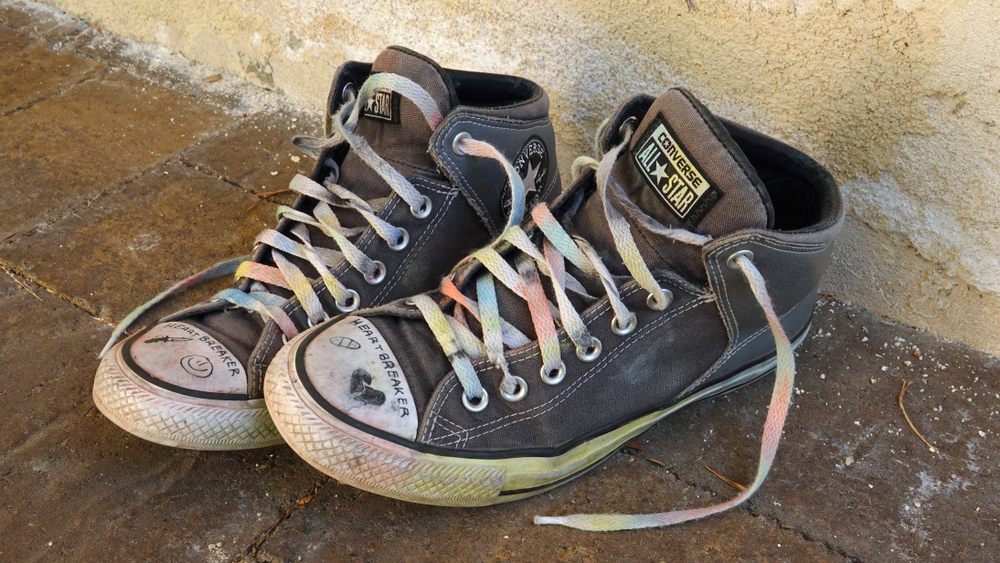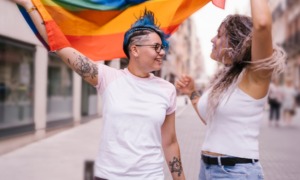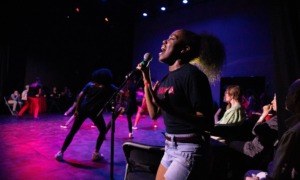
Simone Hogan/Shutterstock
.
In 2013, my colleagues and I were gathering stories from youth around the country to better understand their pathways into the justice system — particularly for lesbian, gay, bisexual, questioning, transgender and gender nonconforming youth (LGBQ/GNCT), most of whom were also of color.
When our research brought us to Chicago, we were eager to understand where there might be similarities and differences in youths’ experiences, both across our targeted states and within the diverse Chicago neighborhoods. We talked to black boys at their schools in the South Side about curfews imposed by the city and being arrested on charges of “mob action” just for standing on corners in groups of two or more.

Aisha Canfield
We heard from LGBQ/GNCT youth of color in Boystown about their child welfare involvement, their complicated treks to get to the only LGBT center at the time and listened as they shared their struggles to provide for their children or younger siblings. We watched black LGBT youth pass through security to enter the youth programming on the second floor of the center — a location far from the segregated predominantly black South Side where they lived — navigating through groups of predominantly middle-upper-class white gay men shopping at the adjacent Whole Foods or heading to the center’s gym. On one occasion, we witnessed a youth get arrested while attempting to enter the center for “causing a disturbance.”
Near the end of our stay in Chicago, we were invited to interview youth at a homeless shelter. We were given little information that would inform how the youth fit into our sample except for age range and were notified that any other information would be impossible to provide as the shelter would not know who would be in attendance until after the “lottery drawing.” We arrived at the shelter, located across the street from a police station, just as youth were lining up, we assumed, to enter the shelter.
Instead, young people enter a lottery for a bed to sleep in for the evening. Every night in Chicago, the number of youth in need of a place to sleep exceeds the availability of beds. This is particularly true for LGBQ/GNCT youth both because of their sexual orientation, gender identity and expression (SOGIE) and their age, as many are minors.
At this particular shelter, youth line up at dusk, enter a lottery and wait to determine if they will stay at the shelter. As we began introductions with youth interested in participating in an interview, those who did not win a bed in the lottery lingered outside in the dark, across the street from the police, some alone and others in pairs. Eventually all dispersed into the night. We were later told by youth in the interviews that those who did not have the luck of the draw and could not secure alternative shelter for the night would sleep in parks, under bridges or on the “L” (elevated train) with hopes of evading danger and law enforcement.
The Pathways from Homelessness to Detention
As researchers and advocates, we were deeply concerned by the stories about police and the visibility of police in the areas we conducted our interviews. Each group of youth shared experiences of police harassment and misconduct all too common and familiar. However, the youth homeless shelter across the street from the police station gave a stark picture of the criminalization of homelessness.
On any given night, over 4,000 young people under the age of 18 are alone and homeless and almost 380,000 minors will experience unaccompanied homelessness each year. This same study by the Corporation for Supportive Housing shows that just under half a sample of homeless youth in 11 cities had been in a juvenile detention facility and over half had been arrested. Other studies show that 40% of homeless youth are LGBQ/GNCT. For many of these youth, it is the same forces that create an environment ripe for homelessness that also make them susceptible to system involvement — racism, heterosexism, homophobia, transphobia and capitalism.
The research on the pathways into homelessness and later to justice system involvement for young people is compelling but unsurprising, especially for LGBQ/GNCT youth of color, and are fraught with the failures of public youth-serving systems. While more than half of all homeless youth report they were kicked out of their homes, research conducted with youth in the justice system found that LGBQ youth are twice as likely than straight youth to have experienced physical abuse in their homes prior to being removed by a social worker, and GNCT youth were almost four times more likely than cisgender youth to have experienced physical abuse.
Foster and group homes do not guarantee young people a safe and supportive environment where they can be their full selves, particularly for LGBQ/GNCT youth and many end up running away from placements because of mistreatment of their SOGIE. And while teachers, school counselors and support staff serve in supportive roles for many young people who feel safe enough to attend school, 56.6% of LGBQ/GNCT youth report hearing disparaging remarks from school staff and 80% report being harassed and assaulted. As research has shown repeatedly, detachment from supportive family structures and school networks is an invitation for homelessness. As a result of being on the streets and in dangerous and economically precarious positions, it is also an invitation for justice system involvement.
Decriminalize Survival Crimes
For the majority of homeless youth who end up in the justice system, the criminalization of their circumstances and acts of survival are often the system’s justification for their arrests. In a city with imposed curfews for minors, homeless youth who must wander the city at night because they did not win the shelter’s lottery for the night are by default committing a (status) offense. The young person sleeping on a park bench who gets into an altercation while warding off an attempted robbery can be charged with assault. Jurisdictions must decriminalize behaviors based off young people’s ages and contextualize their behaviors according to their circumstances.
Regardless of a homeless young person’s history with the justice system, as long as their circumstances don’t change, neither can the tools that enable them to meet their basic needs. System actors authorized to determine the fate of these young people must serve as entrants into services rather than systems.
Develop Non-patriarchal Interventions
Preventing young people from living at the margins of homelessness and justice system involvement requires programs and services that no longer split youth into populations that are deserving and undeserving of assistance. For example, well-meaning programming, like gender-responsive services targeted at straight cisgender girls who are seen as worth saving, further marginalizes gender-nonconforming, nonbinary and transgender youth and impose patriarchal binaries of sex and gender onto all youth, regardless of SOGIE. Furthermore, it negates the ways race constructs gender and gender is racialized.
That night at the shelter in Chicago, my colleagues and I gained invaluable information about the pathways into the justice system for young people. For some, the path had been long and winding. For others, the doors in and out of shelters and detention facilities were always revolving. But for all of them, the threat was as imminent as the police station across the street.
Aisha Canfield, director of Ceres Policy Research, is a wife, mother, director and QPOC living in the Bay Area. Her work in research and policy is aimed at the liberation of communities most impacted by the justice system.































